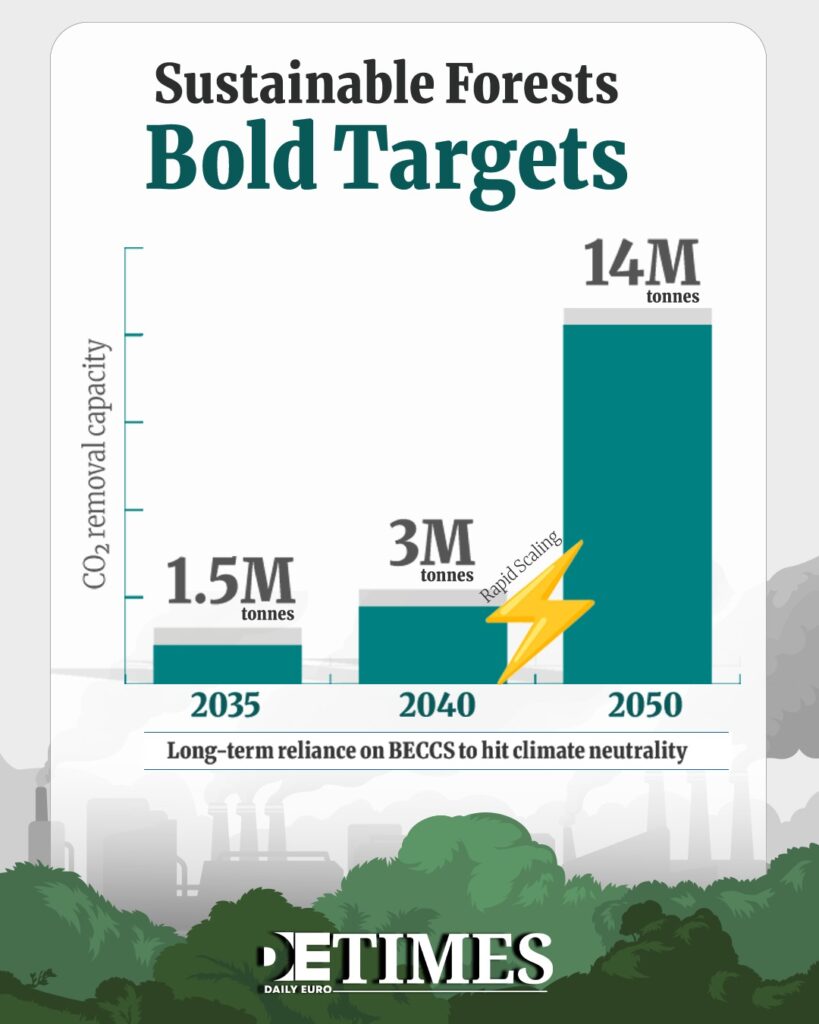Bioenergy remains an important part of the energy strategies of Sweden and Finland. The use of wood biomass and other biofuels helps reduce dependence on fossil fuels and cut emissions.
However, new EU regulations aimed at environmental sustainability pose challenges for bioenergy producers. In response, both countries have announced a series of measures aimed at protecting bioenergy whilst aligning with macroeconomic interests.
Sweden: Protection through Legislation
Stockholm is using immediate fiscal policy to ensure bioenergy compliance.
- BECCS Government Subsidy Scheme
In July 2024, Sweden received approval from the European Commission for a €3 billion government subsidy scheme for biogenic CO₂ capture and storage (BECCS). Projects that can capture at least 50,000 tonnes of biogenic CO₂ annually will receive long-term subsidy contracts.
- Increased Biofuel Blending Obligation
In Sweden, the government has proposed increasing the “reduction obligation”; the commitment to reduce emissions through the use of biofuels, from 6% to approximately 10% for gasoline and diesel, starting July 2025. This creates additional demand for biofuel production.
- Biogas Production Support
The Biogas Investment Program includes subsidies that incentivise the production and modernisation of equipment to facilitate the transition from fossil fuels. Significant budgetary funds have been allocated, approximately SEK 500 million.

Finland: Strategy, Sustainable Forest Management, and BECCS
Yet the Finnish government also aims to manage to integrate bioenergy into it’s climate strategy although aimed at long-term planning.
- Draft Energy and Climate Strategy
In 2025, Finland opened consultations on a new draft energy and climate strategy, with the active implementation of BECCS as a key element.
The strategy envisions Finland removing approximately 1.5 million tonnes of CO₂ equivalent per year through bioenergy and carbon capture by 2035, with this figure potentially doubling by 2040 and reaching approximately 14 million tonnes by 2050.
- Sustainable Forest Use
The Finnish Energy Association has developed recommendations that strengthen the environmental component, considering biodiversity, in forest biomass procurement. This approach helps minimise harm to forest ecosystems, which is important for the long-term stability of bioenergy supplies.
- Support for Renewable Energy and Bioenergy
Finland has also received approval from the European Commission for a strategic financing scheme for renewable energy, including biofuels, biomass, and biogas. This scheme encourages investment in the construction and modernisation of bioenergy facilities.
Common Challenges
Sweden and Finland insist on the need for flexibility in EU regulations, particularly in forest and LULUCF (Land Use, Land-Use Change, and Forestry) regulations.
In a joint letter from both governments to the President of the European Commission, they noted that current forestry targets, including the requirement to increase CO₂ absorption by forests, could negatively impact economies and jobs if strict logging bans continue.
There is also criticism from scientists and environmentalists: intensive forest management, monocultures of trees, and climate change (droughts, tree diseases) are already reducing the capacity of forests to absorb carbon. This undermines the sustainability of bioenergy, which depends on forest biomass.
Consequences for Bioenergy and the Economy
Protecting bioenergy is important not only for climate resilience but also for employment: the forestry industry is a significant export and employment source in both countries. Uncompensated restrictions could harm regional economies, especially in northern and rural areas.
More sustainable forest management, tax incentives, subsidies, and government support for technologies such as BECCS help make bioenergy more competitive and resilient to regulatory changes.
Sweden and Finland are taking concrete and ambitious steps to protect bioenergy production in the face of increasingly stringent EU regulations and climate challenges. State support for projects that capture biogenic CO₂, raising biofuel blending standards, and recommendations for sustainable forest management are all elements of the strategy.
However, balancing environmental sustainability, forest conservation, and economic interests remains a complex challenge. Ultimately, the success of bioenergy depends on flexible regulations, innovation, and long-term public policies that can align climate goals with the realities of the industry.
Read the Latest Articles on DET!
Suez on Rails: China is Changing the Map
Plucked Out of Thin Air? How Meteorologists Name Storms
I Need My Labubu: Wang Ning’s Billion Dollar Toy


